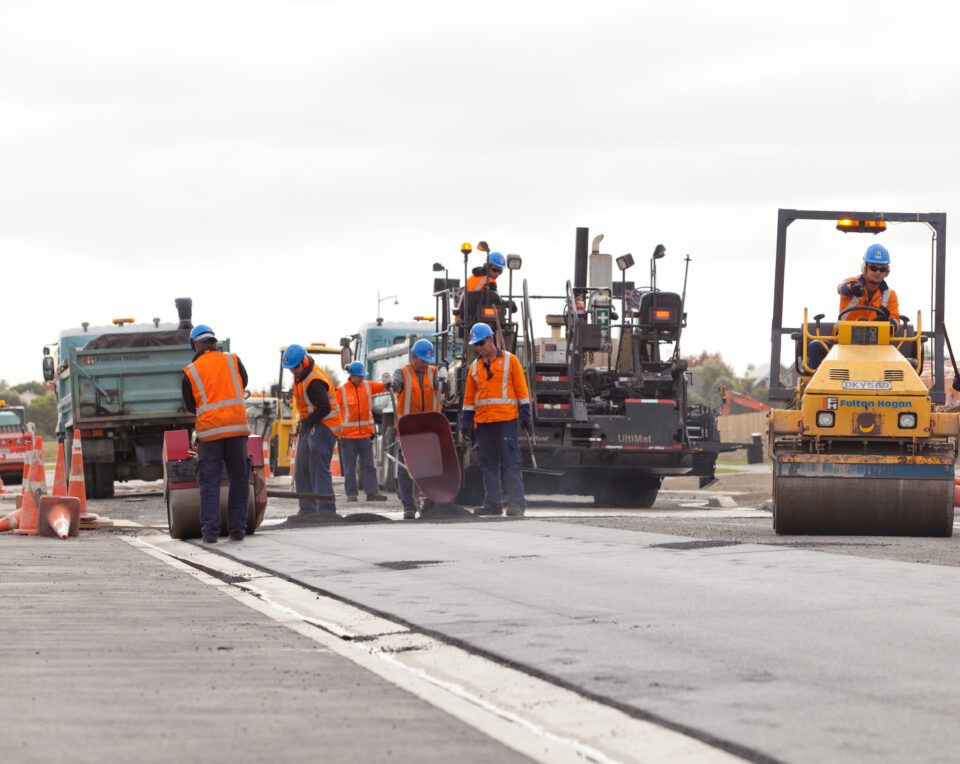By Cos Bruyn, Managing Director, Fulton Hogan.
I read with interest the article on Auckland City traffic management under review in the May Contractor magazine and feel compelled to put some industry perspective on this issue.
I think it can be safely said that contractors are equally frustrated with the proliferation of road cones. I agree in some situations closures with a sea of orange cones can be quite confusing at times. In this mix add workers in orange dayglows which blend into this panorama.
More importantly, while Fulton Hogan’s broader safety statistics continue to incrementally improve year-on-year, injuries to our employees working in the road corridor and exposed to public traffic are not reducing.
This is despite the increasing controls now employed. This can only lead one to question other factors in play such as driver behaviour, lack of traffic enforcement and the severity of consequences, increasing worker exposure to traffic on the road and the narrow carriageways we have in most rural parts of New Zealand in which to work, noticeably different from Australia.
Why have we got to this? There are several reasons, and they are not unique to Auckland:
- Until recently the extent of TMPs were largely set out in a national Code of Practice (CoPTTM). Road controlling authorities have generally taken the approach of following these requirements in full, plus adding additional local requirements – often as a one-size-fits-all approach to respond to meet real or perceived road user and community desires. As an example, over the last decade, the increasing requirement from many road controlling authorities to have dedicated cycle paths along with pedestrian lanes adjoining road works, significantly increases the complexity and volume of TTM on road sites.
- Traffic volumes or effects on adjoining properties are used to justify restricting allowable hours of work, which extends the duration of the work. Restrictions on other aspects of the work can also result in larger and/or longer duration disruption. More extensive alternative approaches of road closures causing more disruption but over a much shorter period are seldom accepted. This is despite potential better overall safety outcomes for workers and the public, not to mention better quality and productivity outcomes leading to lower cost. A good recent example was Waka Kotahi’s closure of SH6 between Nelson and Blenheim to effect road repairs following last year’s flooding event. Essentially two years of ongoing traffic closures were reduced to seven weeks of work. This was a great collaborative effort using the local supply chain. The cost of traffic control in this example was minor in terms of the overall cost to complete the works. Yes – it inconvenienced a few, but the outcomes and productivity gains achieved for the wider community cannot be questioned.
- There is significant merit in terms of disruption, duration of works and cost in reducing the extent of traffic management in a number of circumstances for low-risk activities. Many of our incidents occur during the deployment or pack-up of TMPs. However, the industry is cautious and we recognise that in the event of a significant injury occurring, we will be judged by the Regulator against what was possible to protect our staff and the public, not what was reasonable in the circumstances. The reality of all this is we are losing the ability to focus on what’s practical, what’s important, and what makes sense.
In summary, I am supportive of the Auckland Mayor’s call for ‘traffic management plans (TMPs) that are ’tailored and targeted to risk’.
I believe that this will lead to better economic and community outcomes, while maintaining safe work zones for our staff and the public, however, due consideration must be given to the regulatory environment we now operate under, and Worksafe’s growing predisposition to charge those when incidents happen.
A risk-based approach sounds good in theory until something goes wrong and then ‘it’s every man for himself’.
A move to less traffic management for better safety, economic and community outcomes requires the Road Controlling Authorities, the Regulator, and the Industry to each accept and play their part in achieving the best overall result, but not in isolation to each other.


Parting words from Jeremy Sole- a final column